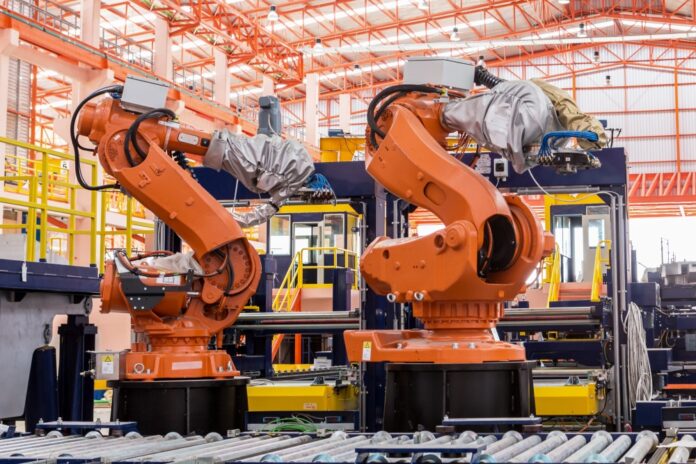Capturing that value means ecosystem players must evaluate how to measure the impact of 5G and edge deployments on the factory floor, according a new report.
5G and edge computing are a technological leap which could transformation the business models for all industries, including manufacturing and associated Industry 4.0 verticals. The market for 5G cellular connections in manufacturing is expected to reach $10.8 billion (€9.55 billion) by 2030, at a compound annual growth rate of 187%, the tech market advisory firm, ABI Research reckons.
New measures
“To capture the value at stake, ecosystem stakeholders will first need to evaluate how to measure the impact of 5G and edge deployments,” said Don Alusha, Senior Analyst at ABI Research. The current Industry 4.0 digitalisation discourse centres around conventional financial metrics (for example, return on investment, net profit and cash flow) as the yardstick to measure 5G and edge computing effectiveness. But these metrics are financial measurements to gauge profit and do not lend themselves to the factory floor.
“Therefore, Industry 4.0 ecosystem entities must consider an alternative set of measurements that look at how 5G and edge deployments aid manufacturing establish operational rules to run a plant. They are throughput, inventory and operational expense for the incoming flow of capital, for capital located inside, and for capital going out, respectively,” he explained.
Factory floor
These three measurements enable Industry 4.0 partners (like ABB, Bosch, Siemens) to institute a direct connection between the 5G’s utility and what takes place on the factory floor. In turn, they will be able to use that connection to find a logical relationship between daily plant operations and the overall company’s performance. Only then, will Industry 4.0 verticals have a basis for knowing the real benefit of 5G and edge computing.
“Equally important is the ability to measure risk when looking to adopt 5G and edge technology assets. Discussions on new technology adoption have always been based on an assessment of risk and reward.
“If the reward is truly compelling, adopters will take the risk. 5G and edge offer unprecedented commercial opportunities, but they inherently constitute new technologies and therefore there is a risk attached,” stressed Alusha.
Supply chain
Attempts to increase productivity and process automation, and establish a reliable supply-chaining that spans multiple geographies, are forcing manufacturers to be more flexible.
According to Alusha, “To understand the importance of supply chaining and its significance in terms of competitive advantage, one need not go any further than Wal-Mart. Wal-Mart is the largest retailer in the world (Amazon is second) and it does not produce a single item. All it ‘makes’ is a hyper-efficient supply chain.”
The capacity, reliability, high-quality service, and speed provided by 5G and a hyperconverged edge compute can optimize operations for a super-efficient supply chain.
With greater reliability and data speeds that will surpass those of 4G networks, a combination of 5G and local edge compute will pave the way for new business value. Commercial benefits will accrue along three broad aspects: agility and process optimization; better and more efficient quality assurance and productivity improvement.
“The implications for solution providers such as Ericsson, Huawei, Nokia and ZTE are that they must enhance their “value add” by complementing their deep technical expertise with business expertise including vertical industry knowledge, new functional expertise (sales, marketing, and accounting) and solution design and consulting expertise tailored at niche use cases,” Alusha concludes.
.



